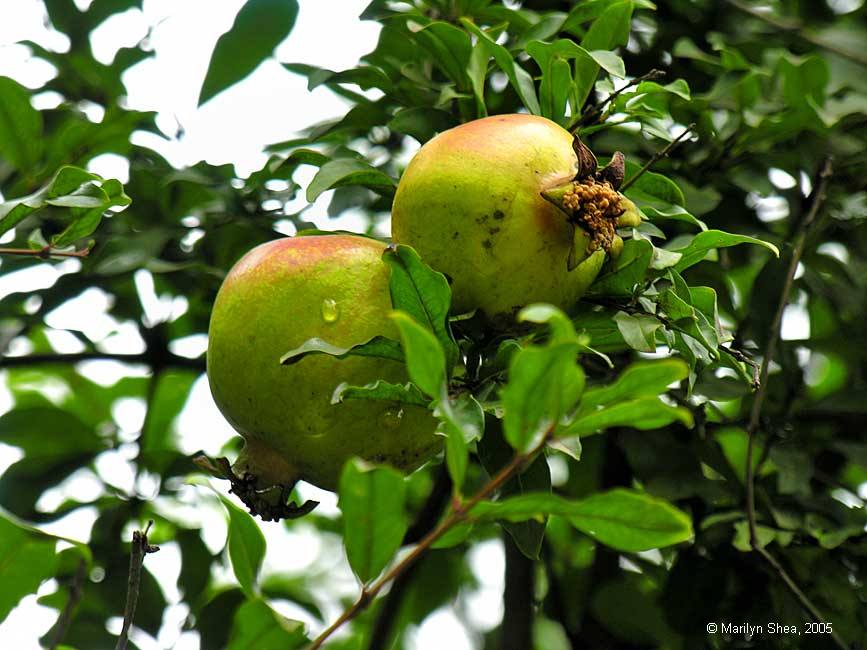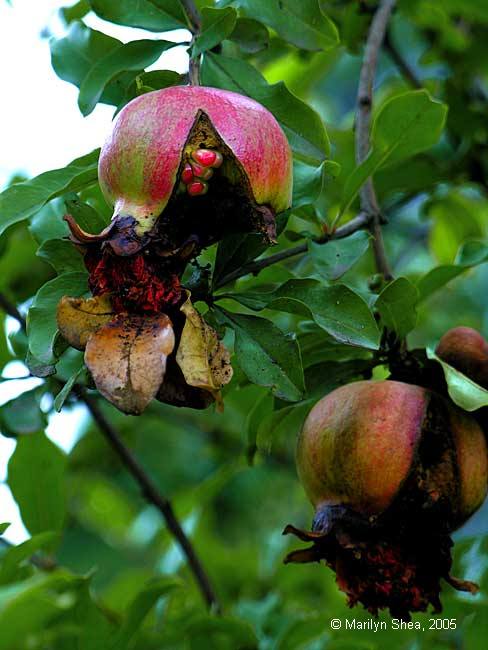 |
|
Punica granatum 石榴 The pomegranate was brought to China during the Han Dynasty from Persia. It was one of many fruits and products introduced to China over the Silk Road. Zhang Qian 张骞 (Zhāng Qiān) was sent as an envoy to explore the world for the Han Emperor Wu 汉武帝 (Hànwǔdì) Traders, travelers, and nomads had made the trip intermittantly and the emperor wanted better intelligence data. Between 138 BC and 115 BC Zhang Qian made three major trips to western countries. He made it to Northern India and Persia, contacting and describing many different civilizations en route. In addition to pomegranates, he also introduced grapes, coriander, walnuts, peas, cucumbers, alfalfa, and caraway seeds to China. More importantly, he opened the eyes of the court to recognition of other cultures and sophisticated peoples. His descriptions of foreign lands were full of praise for their governments, cities, and products. Far from being a barbarion horde with no morals, value, or culture, Zhang Qian found complex philosophies and religion, economic prosperity and inventions, and peoples who were interested in trade with China. The intelligence helped spur Emperor Wu to achieve amalgamation and expansion of Chinese protection along the route of the Silk Road. By establishing outposts along the Taklamakan desert the Han traders could be protected from raids from people like the Xiongnu to the north. Only by securing the trade routes could the Han encourage the foreign traders from today's Uzbekistan, Pakistan, Iran, Greece, and even points beyond, to travel to Chang'an 长安 (Cháng'ān) to bring wares and buy Chinese goods. |
 |
http://hua.umf.maine.edu/China/xian2.html
Last
update: March 2010
© Marilyn Shea, 2010